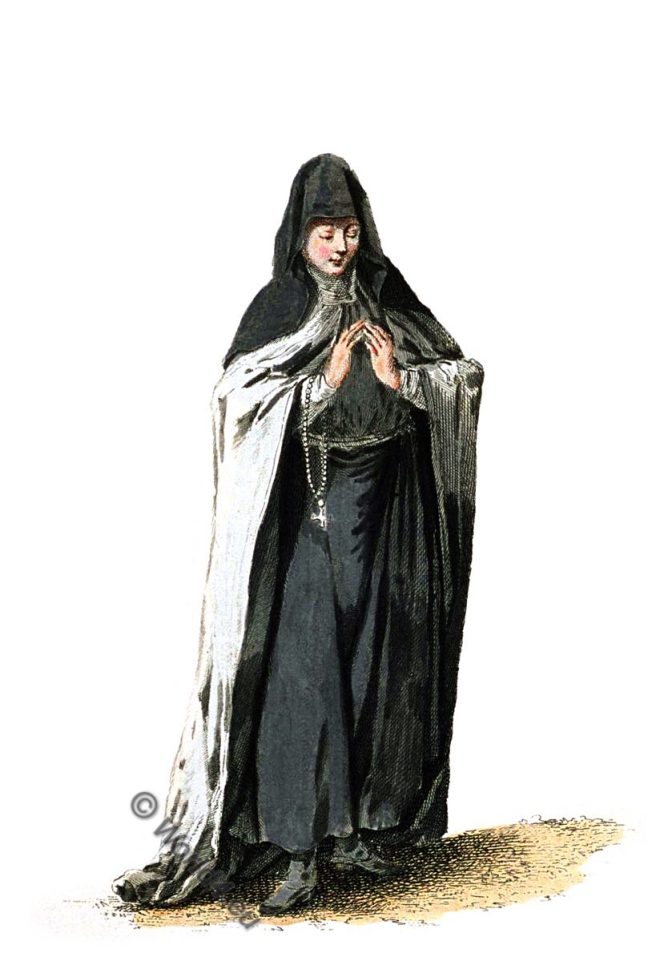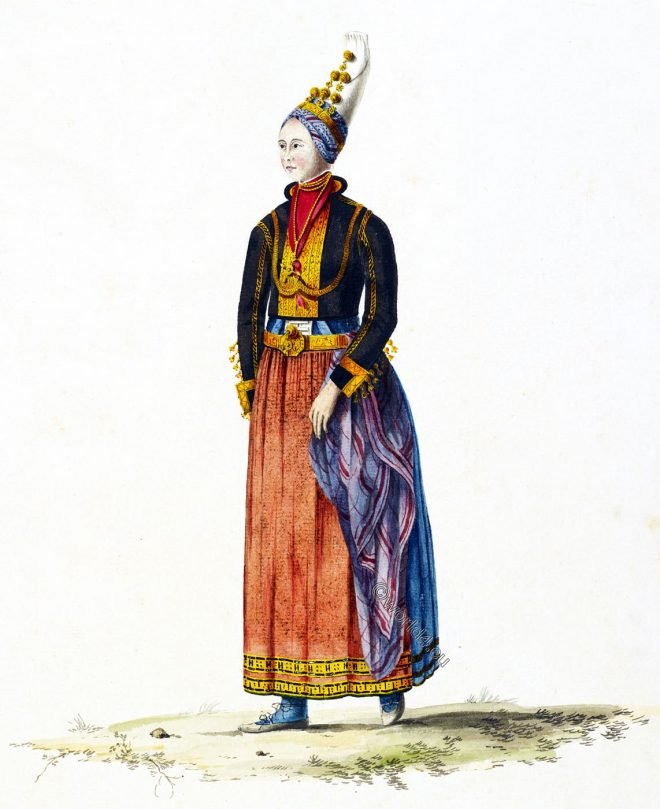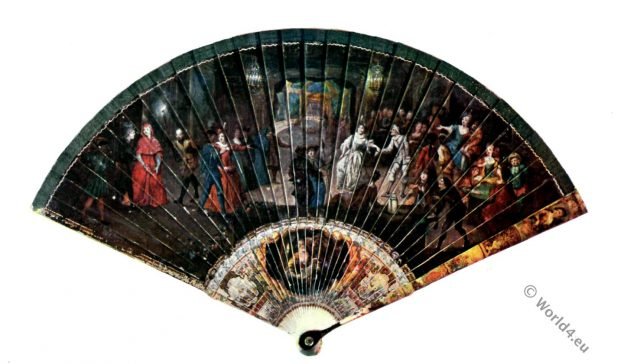Pius VI. P. M.
Category: 18th Century
Costume and Fashion History during the 18th Century. Clothing of the Late Baroque, Rococo, Louis XV, Louis XVI, Rose Bertin Minister of Fashion at the court of Marie Antoinette. The French Revolution fashion period of Incroyables and Merveilleuses. The Georgians and Regency period.
The Basilians. Nun of the Order of St. Basil in her Choir dress.
The Basilians of Saint Josaphat are affiliated to the Ruthenian Greek-Catholic Church and are integrated into the Ukrainian Greek-Catholic Church. They belong to the Basilians.
Habit of an Augustin Nun. Order St. Augustin 18th c.
Religieuse de L’Ordre de St. Augustin. The relatives of the Augustinian women’s orders are also called Augustinians.
THE GRAND SEIGNEUR. The Turkish Sultan in 1749.
THE GRAND SEIGNEUR, taken from VIEN’S CARAVANNE, a book which represents the Dresses in a Turkish Masquerade given by the Pensioners of the French Academy at Rome, in the Year… Read More
Habit of the Sultaness Queen in 1749.
Habit of the Sultaness Queen in 1749. La Sultane Reine. Consort of the Ottoman sultan. THE SULTANESS QUEEN, from VIEN’S CARAVANE *. The Habit of the Women, like that of… Read More
Robe à la Diane. 18ème siècle la mode rococo.
Robe à la Diane. Jolie Femme vêtu d’une Robe d’un nouveau gout dit à la Diane. Galerie des modes et costumes français.
Iceland wedding dress. Iceland bride 1809.
Iceland wedding dress 1809 Source: Journal of a tour in Iceland in the summer of 1809 by Sir William Jackson Hooker. Published by Longman London, Yarmouth 1813. Above picture: Different… Read More
Ivory fan in the form of a deck of cards, vernis Martin. Watteau style.
Ivory fan in the form of a deck of cards, vernis Martin. Watteau theme: a party in a palace, where Pierrot and Colombine dance.
Woman of nobility. Costume from the time of Louis XV. (1730)
Femme de noblesse. Mode du 18ème siècle. Costume du temps de louis XV. (1730)
Persian House and street clothes. Iran 18th century.
Usi e Costumi. Antichi e Moderni di Tutti Popoli del Mondo. Narrati e descritti da L. Bellinzoni. Editore Perino. Roma, 1900.










